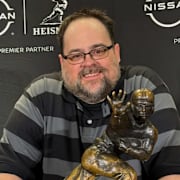Deion Sanders rejoining Nike goes beyond relationship with Colorado

When Deion Sanders left Jackson State University, many questioned if Under Armour would be making the transition, too. Well, low and behold, Coach Prime mended fences with Nike and returned after being away for over a decade. It was a heated 2023 Spring subplot within the shoe culture. Whether this debate crossed your radar or not, the story and hopefully future endeavors are bigger than the debate would suggest. The gist of the debate went something like this.
Under Armour supporters claimed Deion Sanders used his connections and celebrity status to negotiate a brand deal to make Jackson State relevant under the UA label. Sanders isn't going to abandon that relationship just to get back in bed with Nike. The Nike opposition is that Sanders has always been a spokesman for the brand. The UA deal is nice for Jackson State, but it didn't mean anything once he left.
As with most things, the truth is somewhere in the middle. In 1993, at Deion Sanders’ athletic peak, Nike created Deion’s signature line appropriated dubbed, “The Nike Air Diamond Turf," as it was both baseball shoe and football shoe. The logo was even a football goal post emerging from a baseball home plate. The line, the logo, and the name were simplistic beauty only the athletic shoe culture of the 1990s could create. Keep in mind, Nike’s first athlete signature shoe of any global success that was not tied to an Olympic track athlete came in 1984 with Michael Jordan.
At the point of release of the Nike Air Diamond Turf, we were still not even ten years removed from the groundbreaking emergence of Nike as a player in the basketball space. This was also somewhat unchartered waters for the emerging shoe giant. Before the success of the Air Jordan 1, Nike made running shoes. Almost exclusively.
The 1980s belonged to Adidas first and foremost. Then Converse had carved out a decent section of its own in the basketball space. Both Adidas and Converse built their signature model on a single shoe style that all their rostered athletes would wear. That’s why Magic Johnson, Larry Bird, and every other Converse athlete in the mid 80’s wore the same Converse shoe. Just in their respective team colors. Adidas was the same. Bulky, heavy, all leather, but the same concept. Then following the success of the Air Jordan line, which would go onto be the single greatest line of athletic shoes in human history, Nike took a similarly brave albeit smaller risk with another colorful athlete (Slow down, we’re not there yet). That athlete was Andre Agassi.
This long hair, bad boy Andre Agassi we’re talking about, not buzz cut humble Agassi. At this point, Nike had begun diversifying its basketball line beyond just Jordan. Not much in the way of signature shoes like we think of with the Jordan line, more of a tier of basketball shoes.
Unlike Adidas, Nike began to branch out and make completely different lines of shoes that all fit similar functions. While their competitors still clung to leather and heavy stitching and a flat basic LAST (a foot mold that creates the inner shape of a shoe).
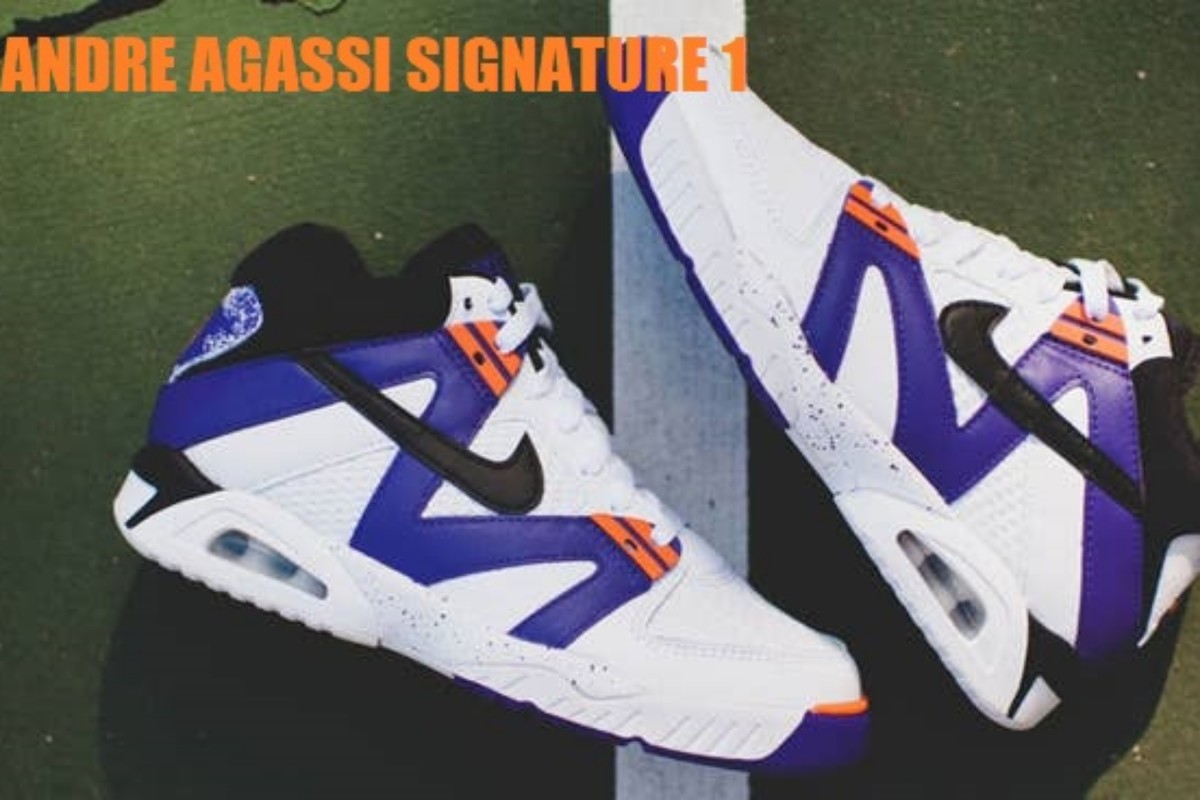
The Agassi line was the next step in that evolution. For back then, these shoes were almost “loud.” Tennis ball neon yellow-ish green was an actual consistent color choice. Those sections were even fuzzy like a tennis ball. Eyelets reinforced with strange plastic shapes. Some had zig-zag designs. It was a bold choice to fit a bold athlete of that time. Agassi's footwear earned some decent success. They weren’t Jordan successful, but to be honest, nothing since then has been. The demise of the Agassi success was not the fault of the design or Agassi’s on court success. The Agassi line just so happened to peak right as the greatest renaissance of athletic shoes was beginning.
Right as Agassi was peaking on the court, his shoe line’s popularity started to fade. It did not follow a logical projection. Think of it like this. If the shoe culture was the NBA in this fictional scenario, Nike Basketball was the Chicago Bulls, and Andre Agassi’s line was the Cleveland Cavaliers or Portland Trailblazers. They just had the misfortune of being really good at a time when Jordan’s Bulls happened to be better.
Nike's basketball division would go onto thrive for the next 20 years. Getting better, design wise, and technologically. Alongside the Jordan line, Nike would begin to trust this new direction enough to start handing out other signature shoe deals. Some of the more notable are Penny Hardaway (my personal favorite) and Charles Barkley. Nike would also add a “Flight” and “Uptempo” line into the mix.
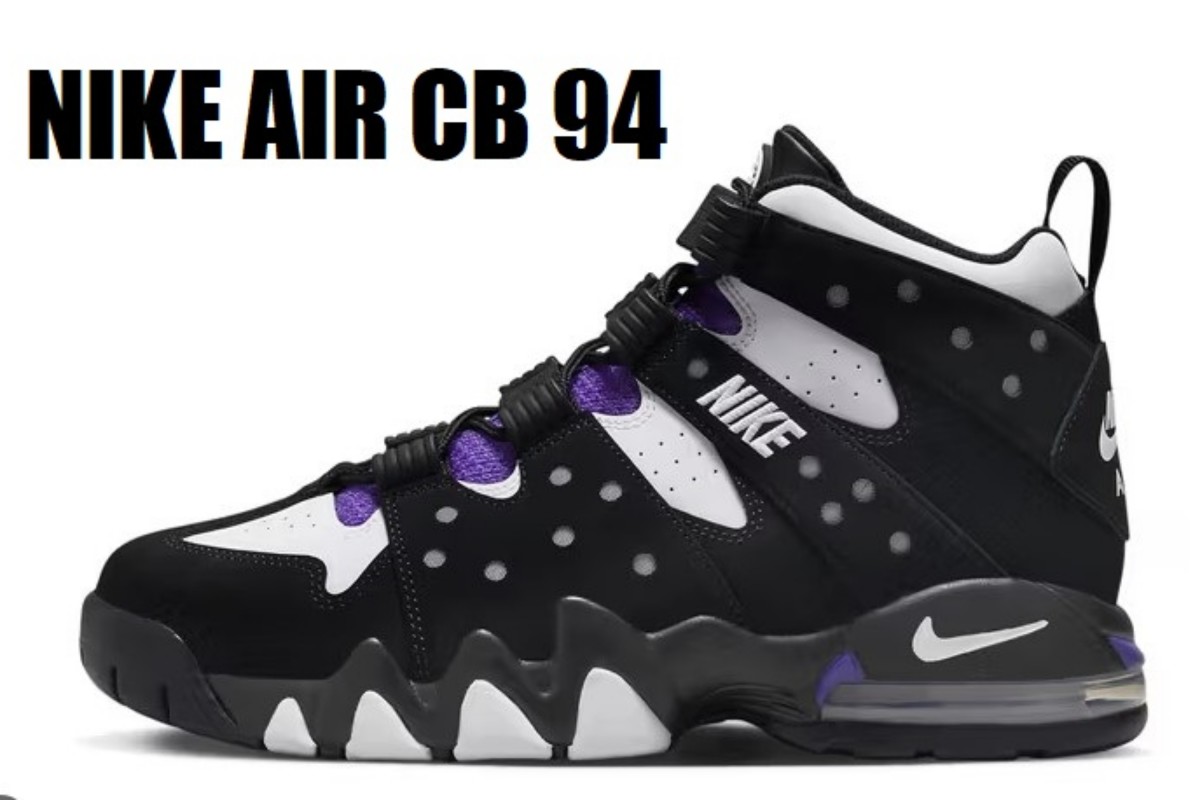
What’s the unchartered waters?
Do football players or baseball players wear basketball shoes (pre-2010s)? No, football players wear categorically cross trainers or, in some cases, all terrain style running shoes at this point in time.
Around 1992-ish, the next logical progression for Nike was to see if they could turn to football, and later dipped their toe in the waters of baseball, to find if they could be profitable sports for the athletic shoe market. The issue was that most football players of the time wore cleats, which have a very small market share and are difficult to market to anyone who doesn’t play out on a field. A market value, unlike running and basketball shoes, has multiple uses.
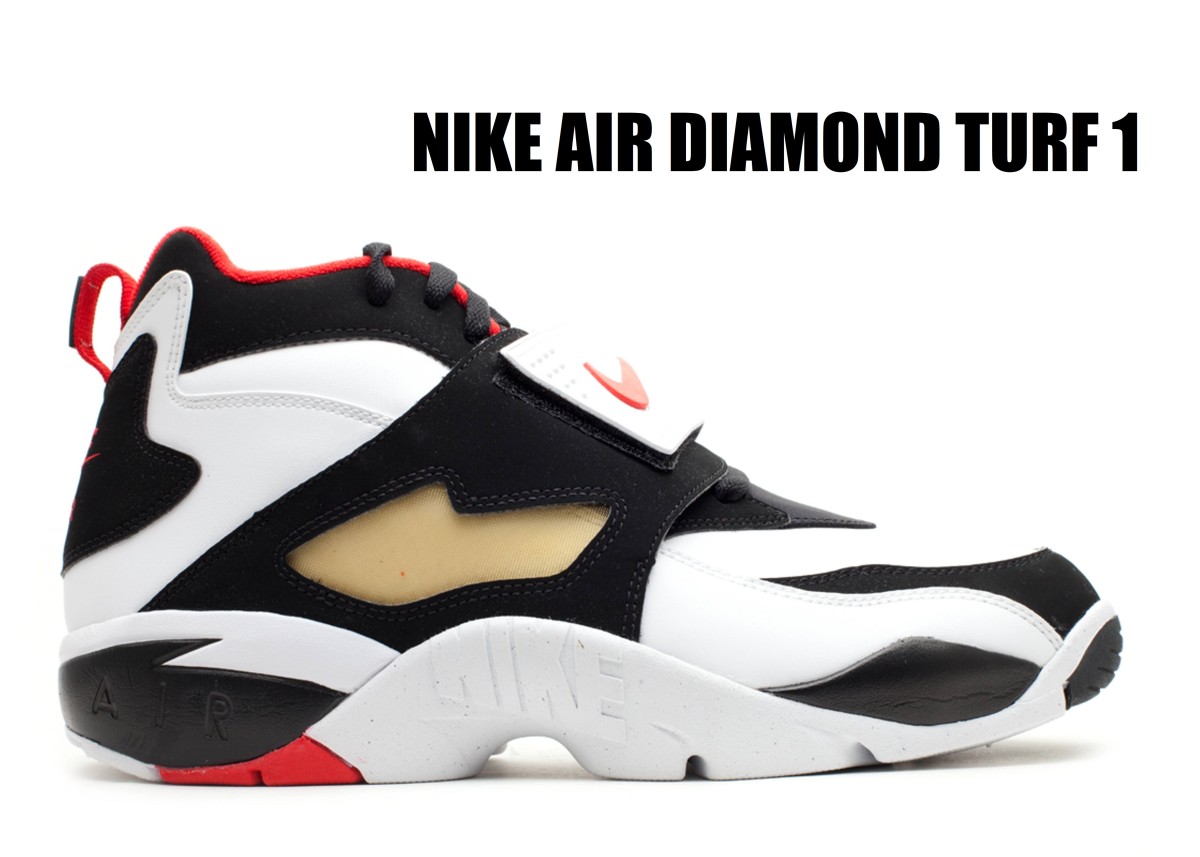
The next best thing was to create a shoe that structurally supports the same areas and for the same reasons as cleats. Trying to turn a pair of football cleats into football shoes, then marketing them in a way that hopefully brings similar success to the basketball line, is the unchartered waters. How do you make something as typically ugly as a football cleat into a marketable ‘signature shoe’?
Well, introducing (then) Primetime Deion Sanders. Remember, this is still San Francisco & Dallas, full bandana under the helmet, high steppin’ Deion. At this point, Sanders had BEEN a superstar going back to his days in the ATL. Nothing about his game nor persona suggested mundane or basic. Nike again, like the Jordan line, would deviate FAR from their typical design style into something more provocative.
Before the release of Deion’s Nike Air Diamond Turf shoe, somewhat quietly, Nike had developed a feature they introduced with the Nike Air Huarache line, which is best described as an “inner sock.” It was wildly-popular with Nike’s traditional running shoe customers. It was insulating without disrupting the fit. This would be a major feature in the Diamond Turf. The shoe was solid, secure, round, and angular at the same time, complete with that inner sock and a strap lined with a visible golden mesh.
Where the Jordan line changed momentum with a basketball shoe that was mostly not white, the Diamond Turf (minus the 3rd color trim) is almost 50/50 black and white. In later colorways of that initial release, the first two dominant colors are almost 50/50. When they rereleased in the early 2000s, the colorways were much more varied.
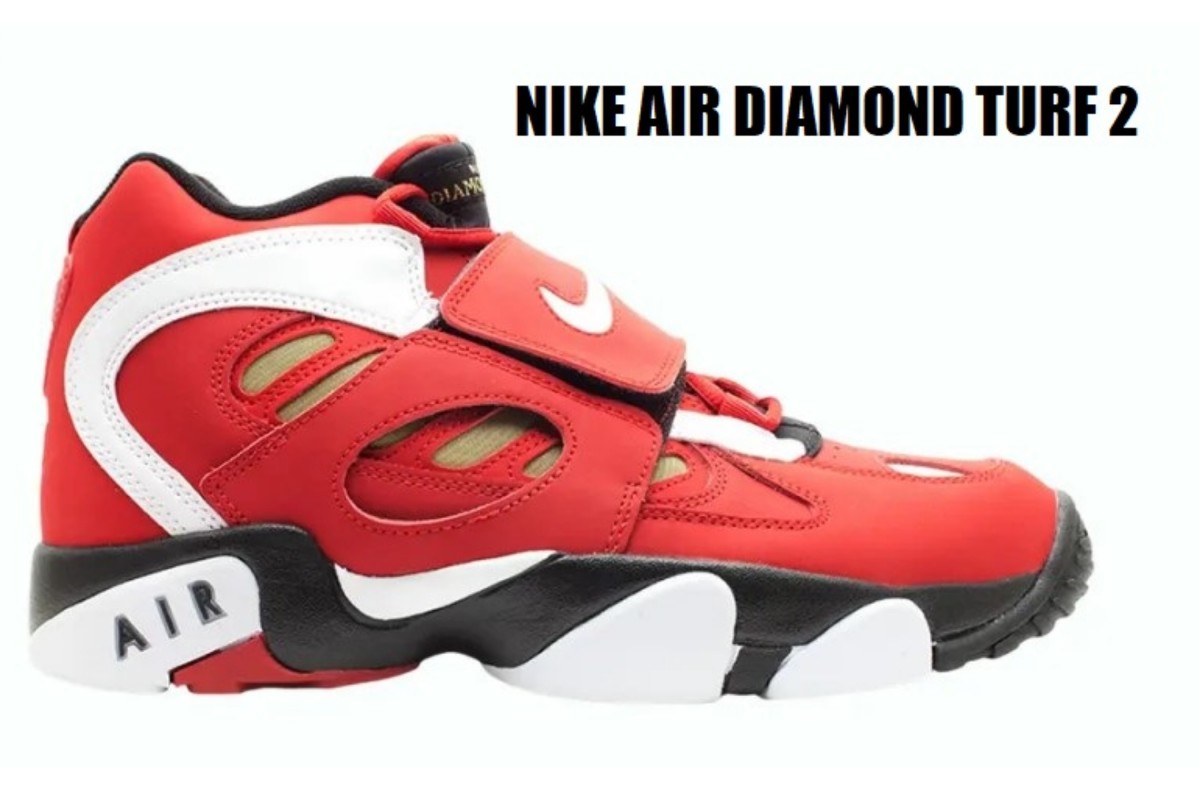
The second Diamond Turf was similarly bold. One could argue the DT1 and DT2 could’ve been siblings instead of separate cousins of one extended family. Similar strap, similar use of gold mesh. This time, the outsole evolved from the almost carbon copy Huarache outsole into something that, again, looks related but still different. The individual sections of the shoe were smaller and more frequent. Yet, by and large, the Diamond Turf 2 feels like an evolution from the Diamond Turf 1. Here’s where it gets interesting.
The Nike Air Diamond Turf 3 debuted in 1996. This is the exact model that I want you to keep in mind when we get to why this article is noteworthy for Colorado's opener with TCU on Sept. 2.
In 1996, Nike Basketball had turned a corner. Now we are fully-entrenched in the signature shoe space, the team shoe space, the more creative or outlandish styles, and now even actual literal team shoes where again the tech is close to signature shoe level but made specifically to fit college team colors. We are past the Reebok Pump vs. Nike Instapump.
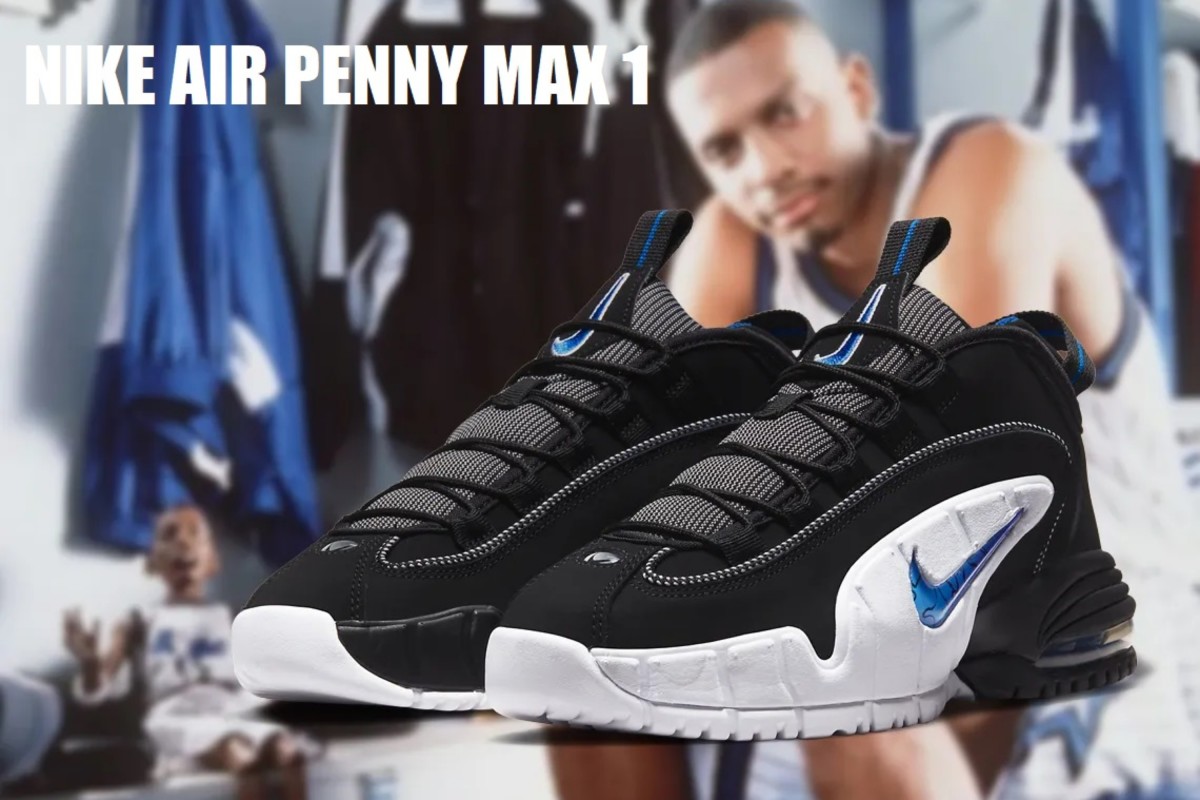
We’ve seen the Penny Hardaway line that would include the Foamposite One. The most expensive shoe to date at that point in time boasting a complete one-piece outsole and an upper that only has 3 stitches. At that point in time, unheard of. Barkley’s line had become increasingly popular as well. Jason Kidd had a line. Gary Payton had a line. Chris Webber had a line. Scotty Pippen had a line.
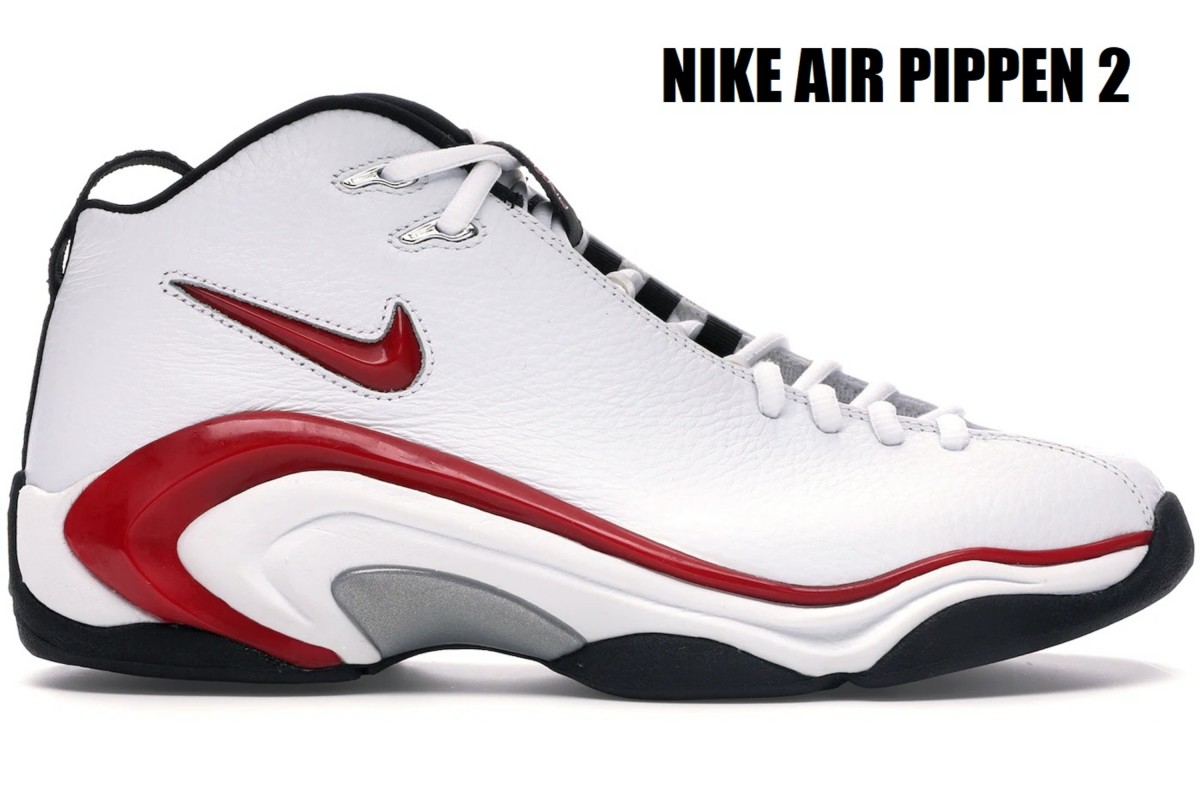
The issue was that with all the success Nike Basketball was having from a design perspective, the Diamond Turf 1, 2 and even the Nike Air Zoom Turf Jet, that would become Barry Sanders signature shoe, just didn’t have the mass appeal that their basketball counterparts not named Jordan were getting. The interesting thing about the Zoom Turf was that it was almost functionally perfect for a running back. A tapered base that gets wider as it goes down. The midsole extended at the arch to move up the upper for unparalleled lateral support for the time. It was durable and looked like a 90s Nike shoe. The turf texturized outsole only added to that rugged but smooth design motif.
In 1996, considering the style of play that Deion had and what was required of that shoe, Nike made an interesting and strategic move. This design choice would not be the only time. Nike would come back to this well often over the next 20+ years. Instead of trying to design a cross trainer to look like a Deion shoe, just design a Deion shoe. Something that is in the typical vein of the Nike design process, design the shoe around the athlete specifically. So, instead of evolving the Diamond Turf 1 further, Nike decided to follow their own advice.
What they created was both function and form at its simplistic peak in 1996. They scaled back the Huarache/Cross Trainer type bulky outsole into something a little smoother without losing the bounce it provided. This time, they adopted the full max air heel bubble and a much sleeker shape. This shoe looks like a functional football cleat had a baby with a basketball signature shoe. Short of saying the shoe had a similarly sized top strap, that’s basically it. Now imagine you painted the whole shoe black. Then visualize white flame like shapes emerged from underneath. A very sleek, smooth shoe that utilized the newer air technology and prioritized ankle support more than lateral arch support with an edgy colorway.
Why is most of that relevant?
Well, if you’re a shoe nerd AKA Sneaker head, how often do you see football players wearing basketball shoes turned cleats in college football or pro football? The answer should be quite often.
For a Colorado specific reference, Shedeur Sanders, on the first day of Media Availability in Fall Practice, walked out to the media gaggle wearing the Panda Jordan 1 low cleats. Odell Beckham, Michael Thomas, Tyronn Mathieu, Davante Adams in the pro ranks all wear Jordan cleats. Most of the non-low top football cleats you see today are just evolved basketball shoes.
That’s how impactful the Nike Air Diamond Turf 3 was. It literally changed how football cleats are constructed, both in design and function.
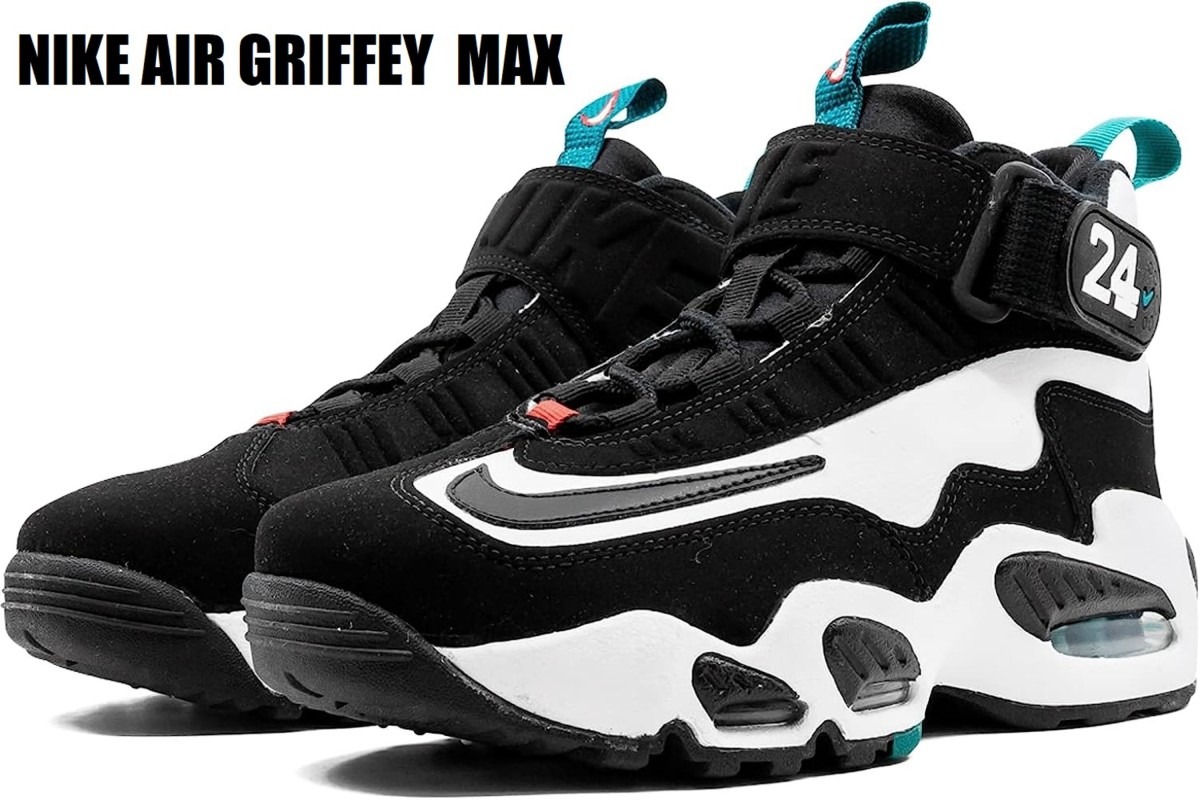
Now, as Deion Sanders’ career would wind down, so too would the popularity of the Diamond Turf signature shoe. To my knowledge, the Griffey line (the only other large scale ‘baseball’ shoe to have any mass appeal) was structurally a cross trainer with basketball shoe design features. However, the Diamond Turf culturally is significant enough that it has been re-release a few times since Deion’s playing days.
This brings us to the early 2000s. This is the Twilight Zone segment of our story. Unless you are a member of the Sanders family, the Nike family, or a fly on the wall for either, the only answer you typically find for what happened in the early 2000s is, “there was a falling out.”
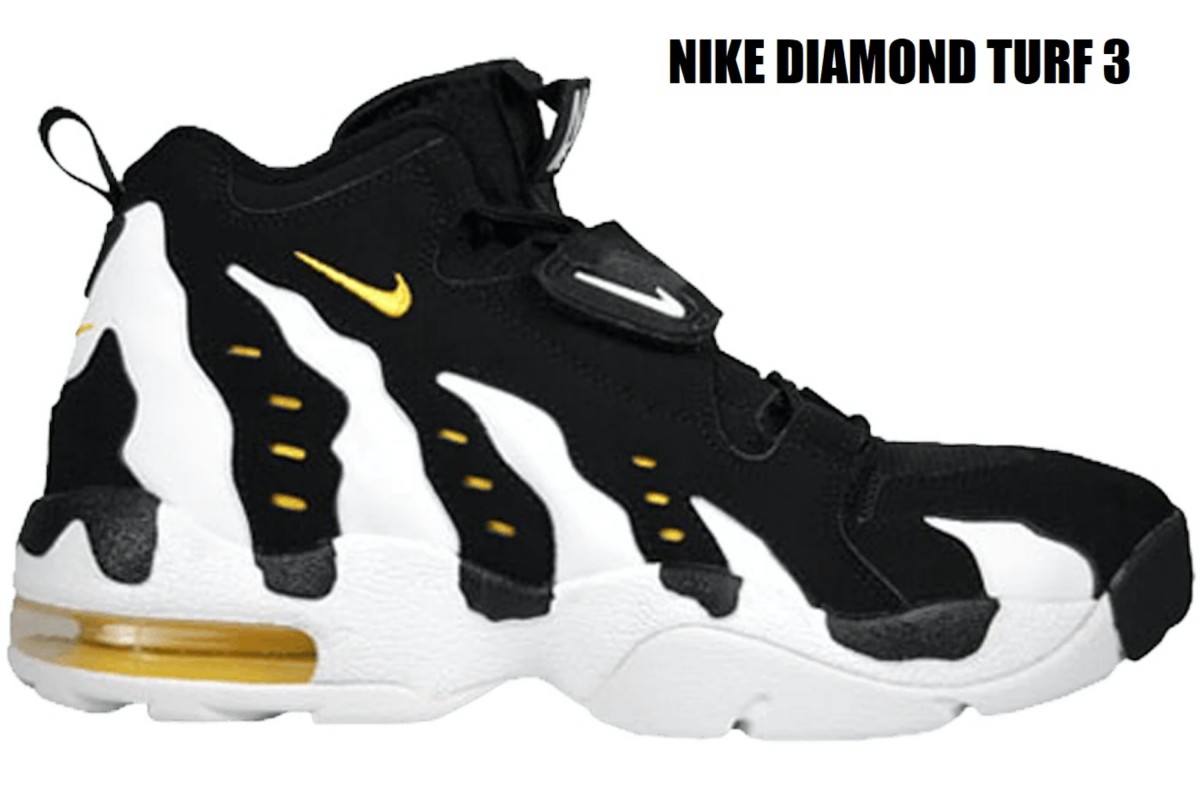
I’m not even going to begin to speculate on what might have transpired for either party involved. What is commonly known, though, is that Deion Sanders parted ways with Nike at some point in the early 2000s. The next time we see Deion in a capacity to notice his footwear, whether that be on the field in Indianapolis for NFL Network’s draft coverage or when he took the job at Jackson State, he was not in Nike. Whatever happened, he left Sanders to choose not to be a Nike brand spokesman.
Fast Forward to Jackson State, as per the debate concept, the pro Under Armour people are not wrong. Deion leveraged his connections and relationships to cultivate a relationship with UA. That was indeed a positive move for Jackson St. Now, where I believe the debate gets it wrong is suggesting that Deion has always been a Nike guy.
But, as we see now, Deion and Nike have dealt with whatever that was, and Deion is once again a Nike guy. Now it’s one thing to be a Nike guy and wear the stock Nike stuff that Nike provides its Nike schools. You’ve likely seen this whether you knew it or not. Players, coaches and staff, care of Well Off Media, have been seen wearing the CU themed Nike Air Pegasus (a Nike running staple for almost 40 years) as well as the more common Nike cross trainers also themed in CU colors. What happens, though, when the shoe nerds in the crowd or on the internet see glimpses of something significantly more familiar and impressive?
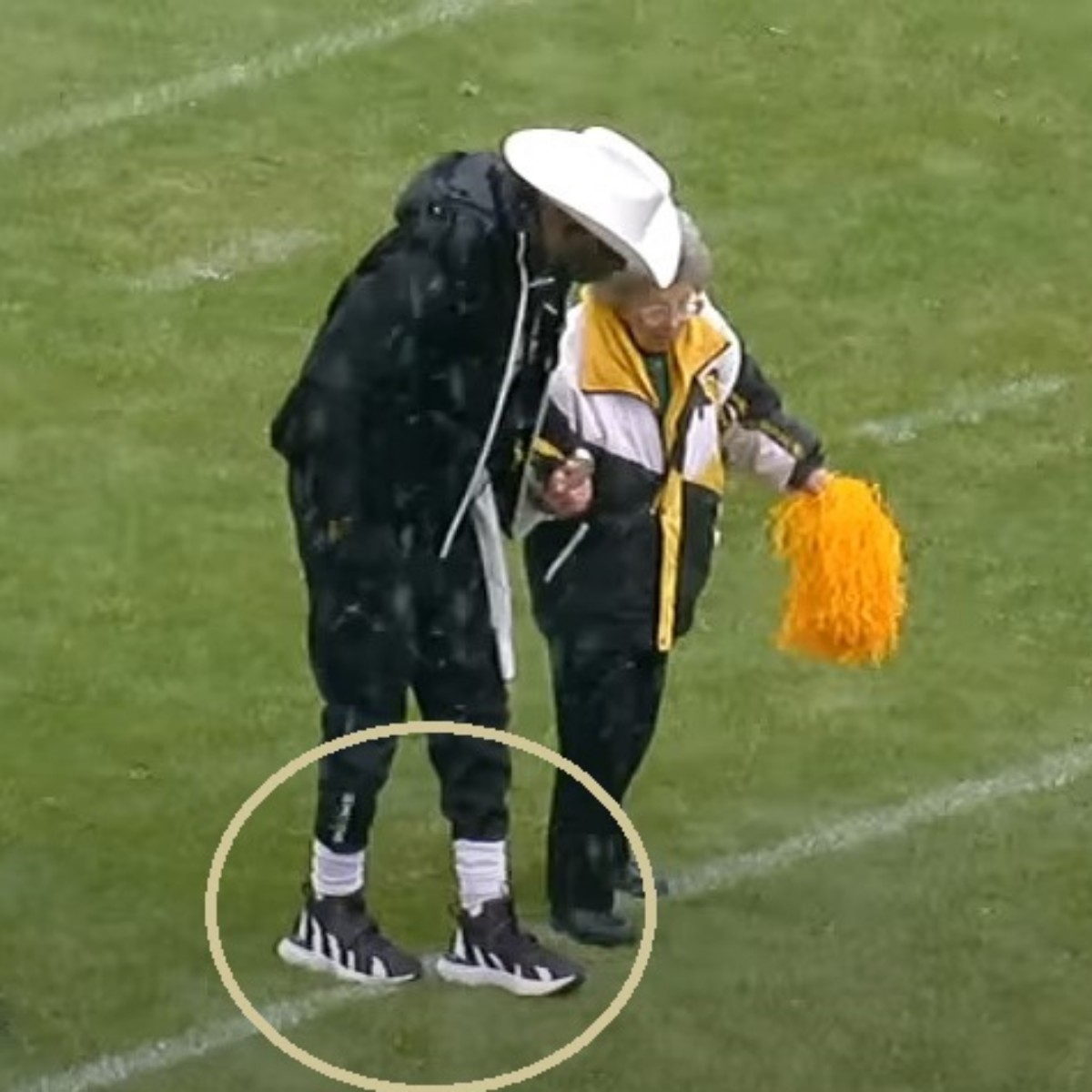
If you saw the image of the Nike Air Diamond Turf 3 and thought, “huh, that looks eerily familiar…?” That’s because Deion wore a customed version of it at the Spring Game. If you watched Peggy on the opening kickoff, they are clearly visible on the Well Off Media and Reach the People coverage, as well as local news coverage of that moment.
Now it could be nothing, right? Could just be that he’s back with Nike, and he just asked if they could make him a pair of his old shoes just for the fun of it. For a while, that was all it was.
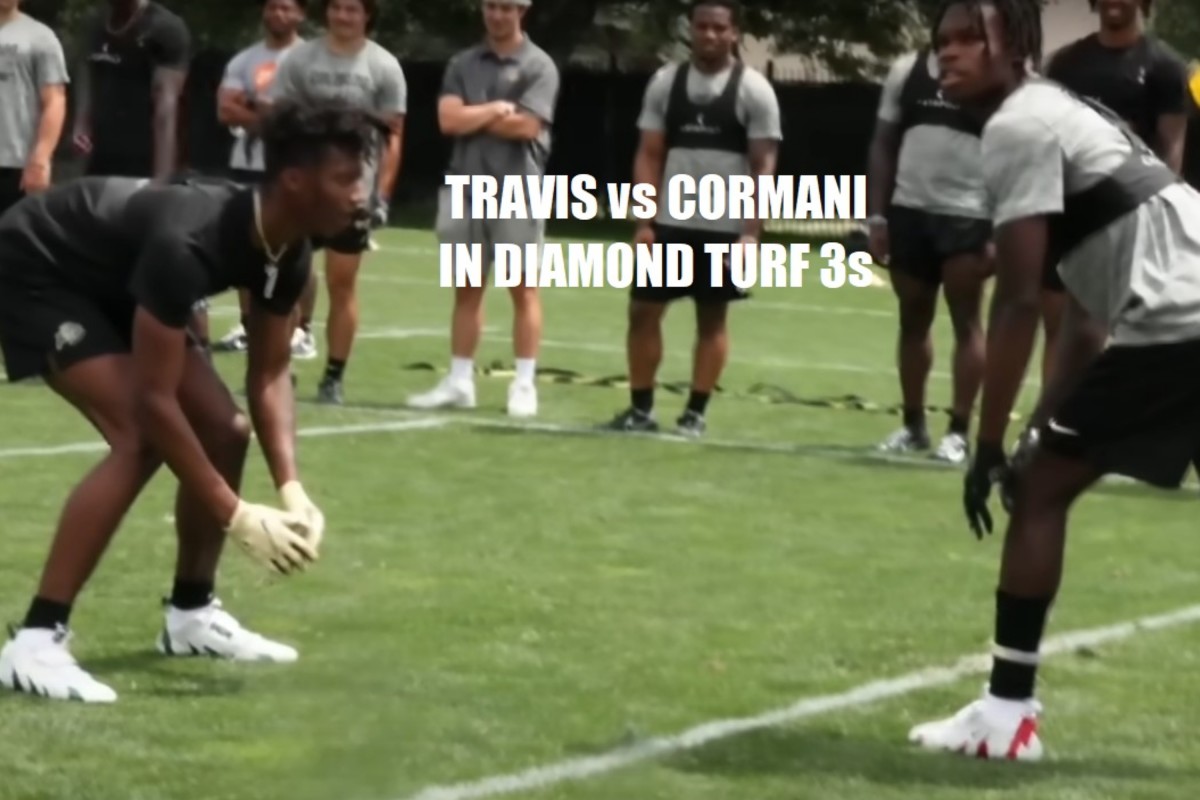
If that’s all it was, I could be happy to see it return even if just for that first glimpse of Deion at Folsom Field. However, not everyone caught it. It’s not getting the attention I think it deserves.
There were at least two practices that I’m aware of where the inside access of Well-Off Media revealed MOST of the team wearing Nike Air Diamond Turf 3 cleats.
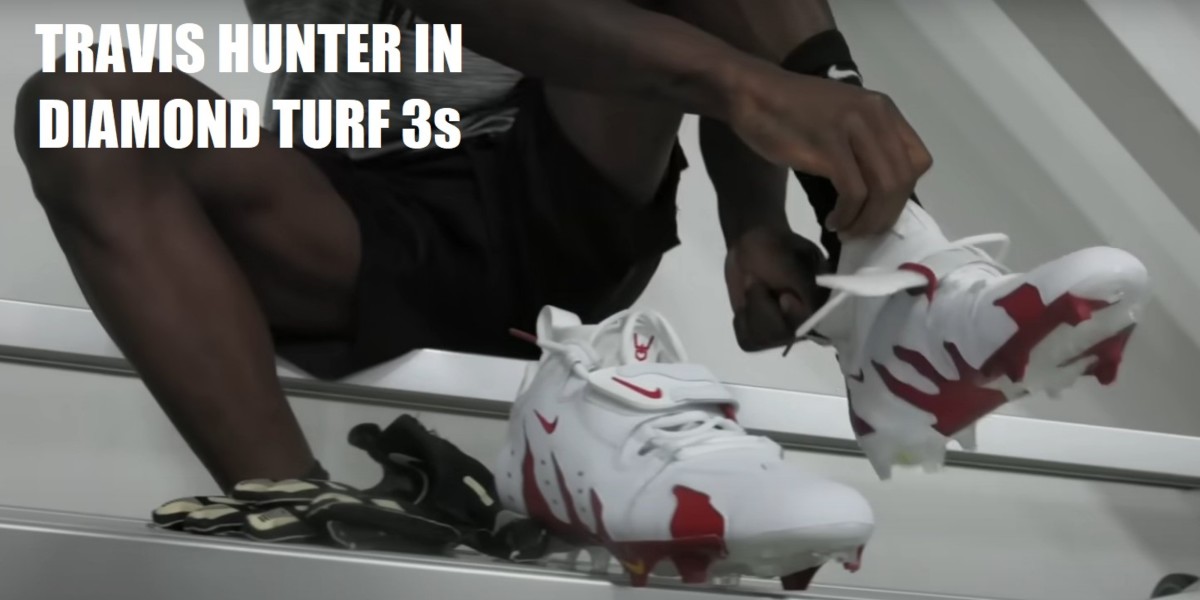
I could be making something out of nothing. But let’s not forget very early in Deion’s time in Boulder. He made one thing very clear about how this team would look. “Everybody’s gonna look like everybody,” including a guy getting kicked out of practice for wearing white socks. It's possible that doesn’t extend to cleats, but for now, we’re going to assume it does.
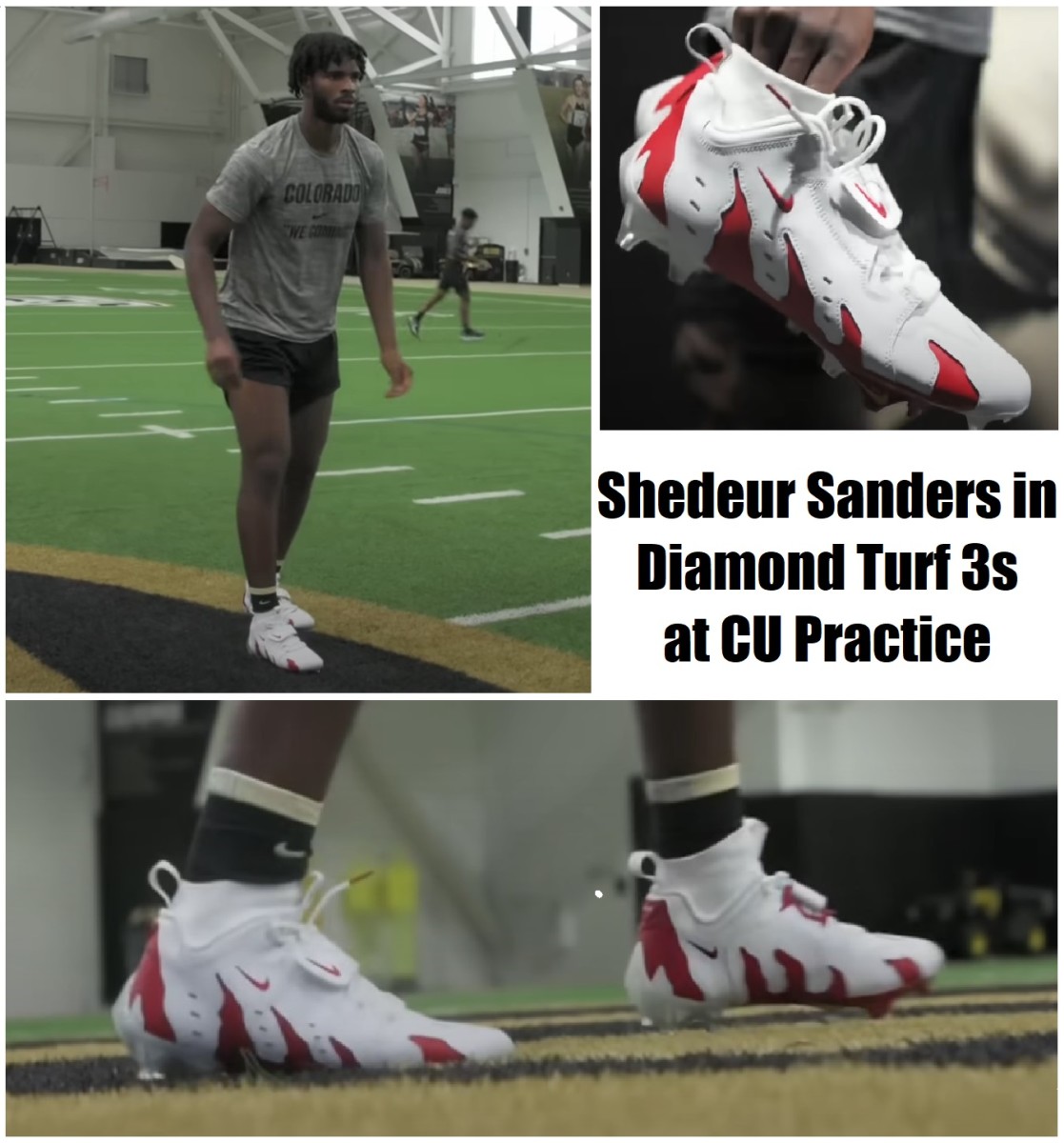
For this reporter and lifelong sneaker head, nothing would be better than seeing Coach Prime successfully run out of that tunnel in Fort Worth, Texas prior to facing off against TCU, leading his team out onto the field where he and every player that follows are all wearing the Nike Air 'DT3' cleats.
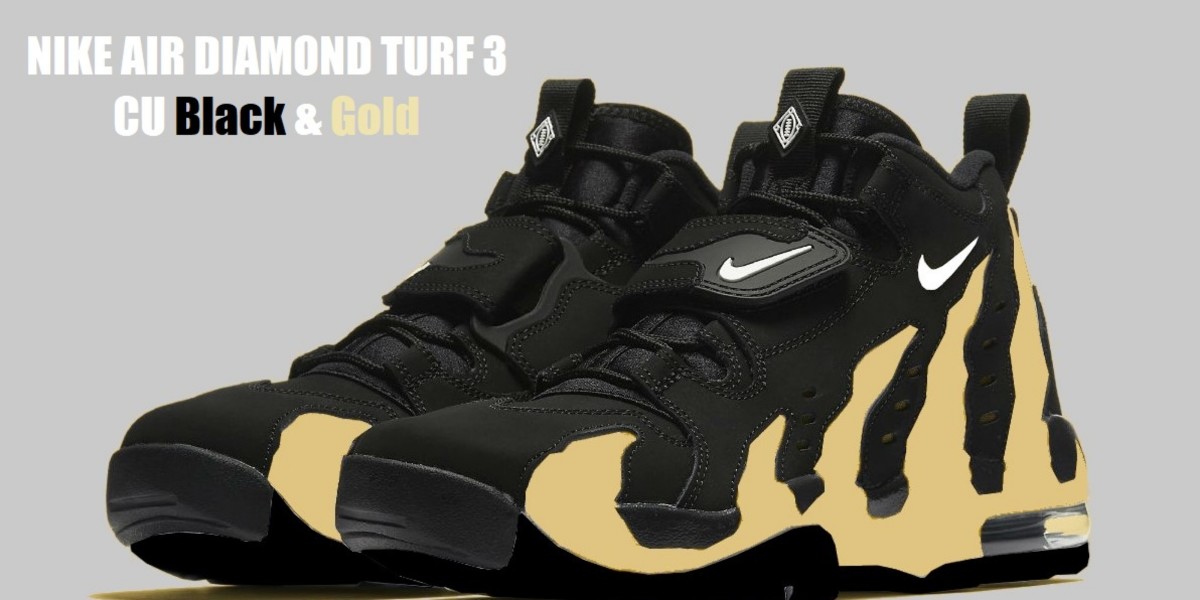
The original half black half white would be fine. But, if they really want to shock the shoe world, come out in Black on Colorado Mineral Gold Diamond Turf cleats. Of course, nothing takes priority over winning the game, but if they want to make a statement about this being a new era in Colorado football, the inauguration of the new look Buffs, then there can be no greater statement of confidence, swagger, or even dare I say “drip” than seeing these Buffs run out in the iconic Nike Air 'DT3' cleats.
